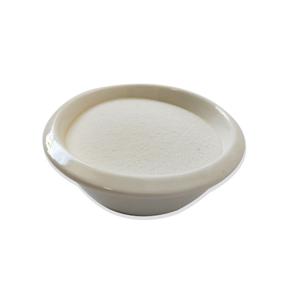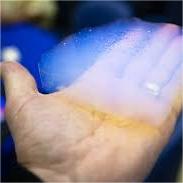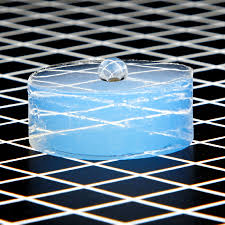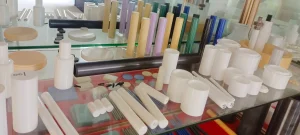Professional industry ceramic supplier, silicon nitride, silicon carbide, aluminum nitride and any other kinds of ceramics.
1. Introduction
In a breakthrough announced just yesterday, researchers at the National Renewable Energy Laboratory (NREL) successfully grew ultra-pure gallium nitride (GaN) crystals using a custom-designed silicon carbide crucible, marking a major step toward more efficient power electronics. This highlights a growing trend: silicon carbide crucibles are no longer just tools for melting aluminum or bronze—they’re enabling next-generation technologies in fields most people never associate with ceramics.
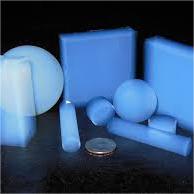
Silicon carbide crucibles—crafted from one of the hardest and most thermally conductive advanced ceramics—excel where conventional alumina or zirconia crucibles fail. Their resistance to thermal shock, corrosion from molten salts, and ability to withstand temperatures above 1600°C make them ideal for highly specialized processes. Below, we dive into five niche, real-world applications where these crucibles are quietly revolutionizing their industries.
2. Semiconductor Crystal Growth for Power Electronics
The production of wide-bandgap semiconductors like silicon carbide (SiC) and gallium nitride (GaN) demands contamination-free, high-temperature environments. Standard ceramic crucibles often leach impurities or degrade under reactive atmospheres. In contrast, silicon carbide crucibles offer exceptional purity and stability during physical vapor transport (PVT) or sublimation growth methods.
Because silicon carbide shares the same base chemistry as the crystals being grown, it minimizes unwanted reactions. This is critical for manufacturing high-performance chips used in electric vehicles and 5G infrastructure. Notably, while zirconia crucibles or alumina tubes might be used in lower-temperature processes, they simply can’t match the performance of a high-grade silicon carbide crucible in these extreme conditions.
3. Molten Salt Electrolysis for Rare Earth Refining
The clean energy transition relies heavily on rare earth elements (REEs) like neodymium and dysprosium. One emerging method to extract and purify these metals involves molten salt electrolysis at temperatures exceeding 900°C. The salts used—often chlorides or fluorides—are highly corrosive.

Here, silicon carbide crucibles shine. Their chemical inertness prevents degradation, ensuring consistent process conditions and reducing contamination of the refined metal. Alternatives like boron carbide vs silicon carbide have been tested, but boron carbide tends to react with certain salts, while silicon carbide maintains integrity over repeated cycles. This reliability is why leading REE processors are increasingly adopting silicon carbide crucibles in pilot-scale refineries.
4. Synthesis of Advanced Ceramic Powders
High-purity ceramic powders—such as silicon nitride, aluminum nitride, or even custom silicon nitride heat shield composites—often require carbothermal reduction or nitridation reactions at 1400–1800°C. These reactions involve aggressive gases like nitrogen or ammonia, which can erode standard crucibles.
Silicon carbide crucibles provide a stable reaction chamber that doesn’t introduce oxygen or metallic impurities. For instance, in the high purity silicon nitride powder market, manufacturers use silicon carbide crucibles to produce powders with <100 ppm oxygen content—essential for sintering dense, high-strength silicon nitride ceramic components like silicon nitride rings or plates used in aerospace bearings.
Interestingly, while some labs experiment with silicon nitride crucible factory prototypes, silicon carbide remains the go-to due to its superior thermal conductivity and lower cost at scale.
5. Nuclear Fuel Pellet Fabrication Research

In advanced nuclear research, particularly in molten salt reactor (MSR) development, scientists need containers that can handle uranium or thorium fluorides at high temperatures without leaching contaminants. Silicon carbide crucibles are being evaluated—and in some cases deployed—for small-batch fuel pellet synthesis.
Their neutron transparency, combined with resistance to radiation damage and chemical stability, makes them far superior to traditional alumina or zirconia crucibles. Although zirconia crucibles are common in lab settings, they suffer from phase instability under irradiation. Silicon carbide avoids this, positioning it as a key enabler for next-gen nuclear materials testing.
6. High-Temperature Additive Manufacturing Support
Additive manufacturing (3D printing) of metals and ceramics often requires support structures or build plates that can endure repeated thermal cycling. While not the primary build surface, silicon carbide crucibles are repurposed as custom trays or containment vessels in binder jetting and powder bed fusion systems.
For example, when printing components from reactive alloys like titanium aluminide, a silicon carbide crucible can serve as a non-wetting, thermally stable base that prevents part distortion. Similarly, in ceramic 3D printing, crucibles made from the same material as the printed part—such as rbsic silicon carbide tile block—minimize thermal mismatch during sintering.
This cross-application underscores the versatility of silicon carbide beyond its traditional role. Even in fields dominated by silicon nitride ceramic or boron nitride components, silicon carbide crucibles often fill critical support roles due to their unmatched combination of hardness, thermal conductivity, and affordability.
7. Conclusion
From enabling cleaner rare earth production to supporting the future of nuclear energy and semiconductor innovation, silicon carbide crucibles are proving indispensable in some of the most demanding scientific and industrial niches. While everyday consumers might associate silicon carbide with ceramic dinnerware—like silicon carbide ceramic baking dishes or black ceramic plates—the material’s true impact lies in these high-stakes, high-temperature applications. As advanced ceramics manufacturing evolves, expect silicon carbide crucibles to remain at the heart of progress.
Our Website founded on October 17, 2012, is a high-tech enterprise committed to the research and development, production, processing, sales and technical services of ceramic relative materials such as 5. Our products includes but not limited to Boron Carbide Ceramic Products, Boron Nitride Ceramic Products, Silicon Carbide Ceramic Products, Silicon Nitride Ceramic Products, Zirconium Dioxide Ceramic Products, etc. If you are interested, please feel free to contact us.

